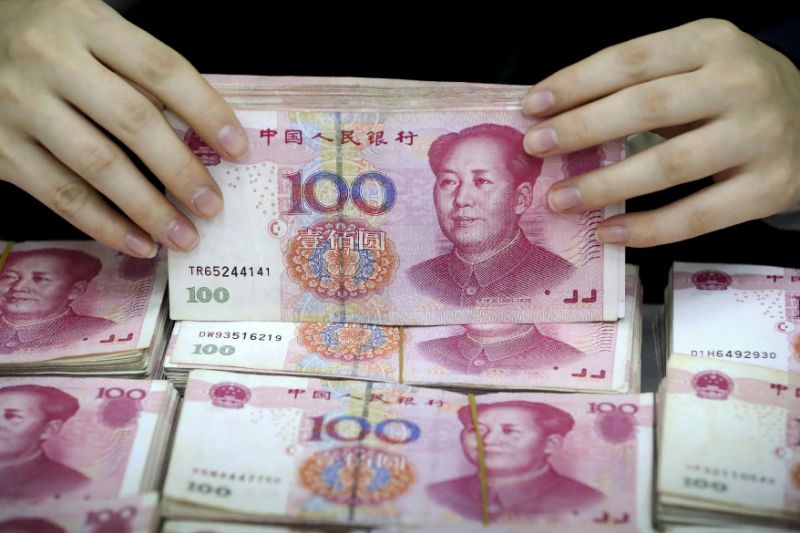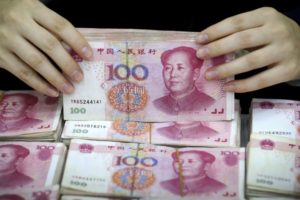China's banks unexpectedly extended more credit in April than in the previous month, highlighting the challenge confronting policymakers as they try
China’s banks unexpectedly extended more credit in April than in the previous month, highlighting the challenge confronting policymakers as they try to temper risks from rising debt. China’s central bank has been guiding short-term interest rates higher to help contain debt risks, though it is treading cautiously to avoid hurting economic growth.
The People’s Bank of China (PBOC) has increased its checks on banks’ off-balance sheet wealth management products – the key component of shadow banking credit, while the banking regulator has stepped up a crackdown on risky lending behaviors.
Chinese banks extended 1.1 trillion yuan ($159.4 billion) in net new yuan loans in April, central bank data showed on Friday, rising from 1.02 trillion yuan in March.
Analysts polled by Reuters had predicted new yuan loans of 714 billion yuan.
Julian Evans-Pritchard, China economist at Capital Economics, said lending held up relatively well in response to policy tightening.
“The upshot is that the deceleration in credit growth which began last summer continued uninterrupted last month with a pick-up in loan growth more than offset by a decline in bond issuance,” he wrote in a note to clients.
“This will feed through into weaker economic growth in the coming quarters but the slowdown should be gradual.”
China’s banks extended a record 12.65 trillion yuan in loans in 2016 as the government encouraged credit-fueled stimulus to meet its economic growth target.
The credit explosion stoked worries about financial risks from a rapid build-up in debt, which authorities have pledged to contain this year.
China’s total social financing (TSF), a broad measure of credit and liquidity in the economy, fell to 1.39 trillion yuan last month from 2.12 trillion yuan in March.
Total new credit to the economy, which includes bank lending as well as other forms of credit, increased by a record 6.93 trillion yuan ($1.01 trillion) in the first quarter – roughly equivalent to the size of Mexico’s GDP. Broad M2 money supply (M2) grew 10.5 percent from a year earlier, the central bank data showed, slowing from March’s 10.6 percent increase and missing forecasts for an expansion of 10.8 percent.
Outstanding yuan loans grew at 12.9 percent by month-end on an annual basis. Analysts polled by Reuters had expected outstanding loans to rise by 12.5 percent.
China’s foreign exchange deposits were at $777.5 billion at the end of April, compared with $772.2 billion a month earlier, the central bank added.
Chinese leaders have pledged to shift the emphasis to addressing financial risks and asset bubbles which analysts say may pose a threat to the world’s second-largest economy if not handed well.
The economy grew a stronger-than-expected 6.9 percent in the first quarter from a year earlier, giving it a solid tailwind to once again hit the government’s full-year growth target of around 6.5 percent.
reuters.com


